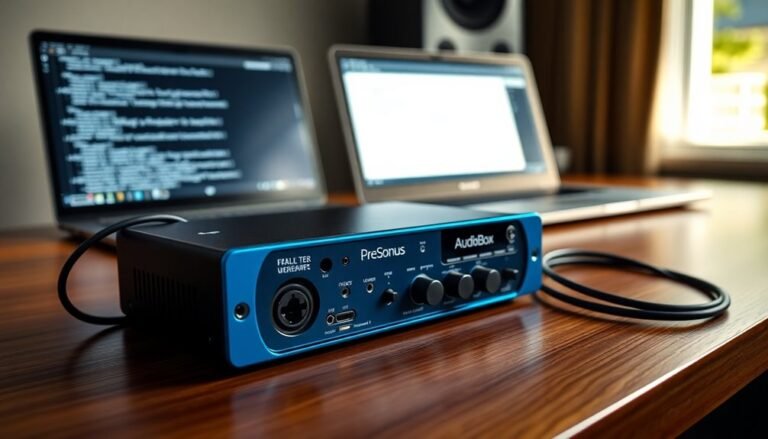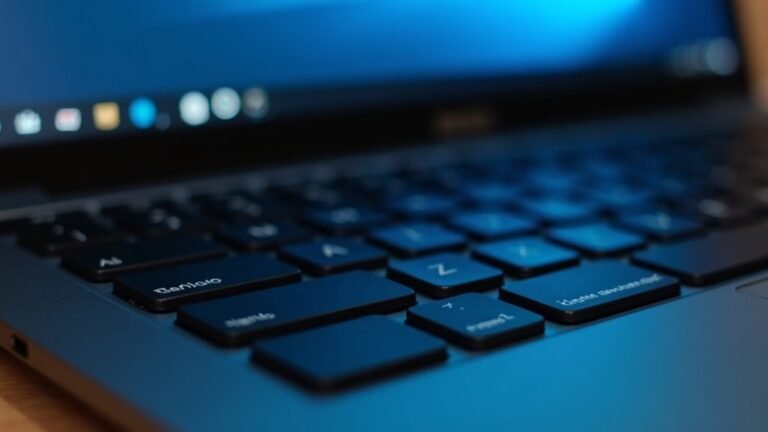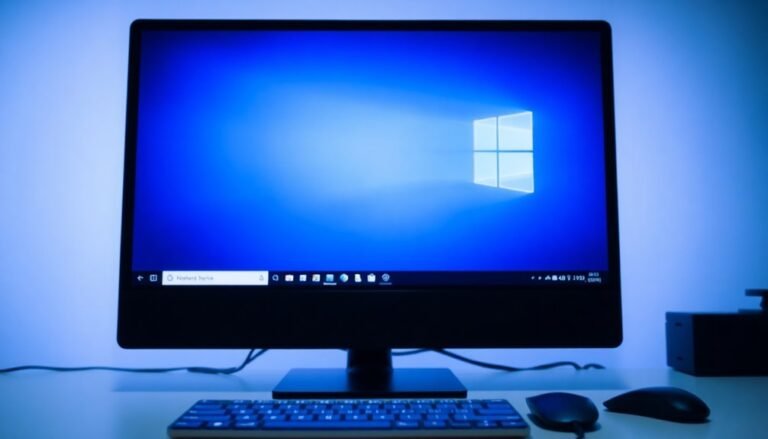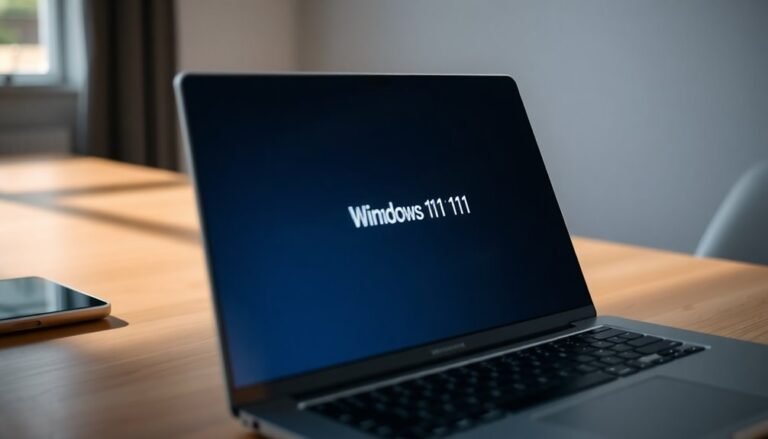Windows Freeze When Idle: Fix System Hanging During Inactivity
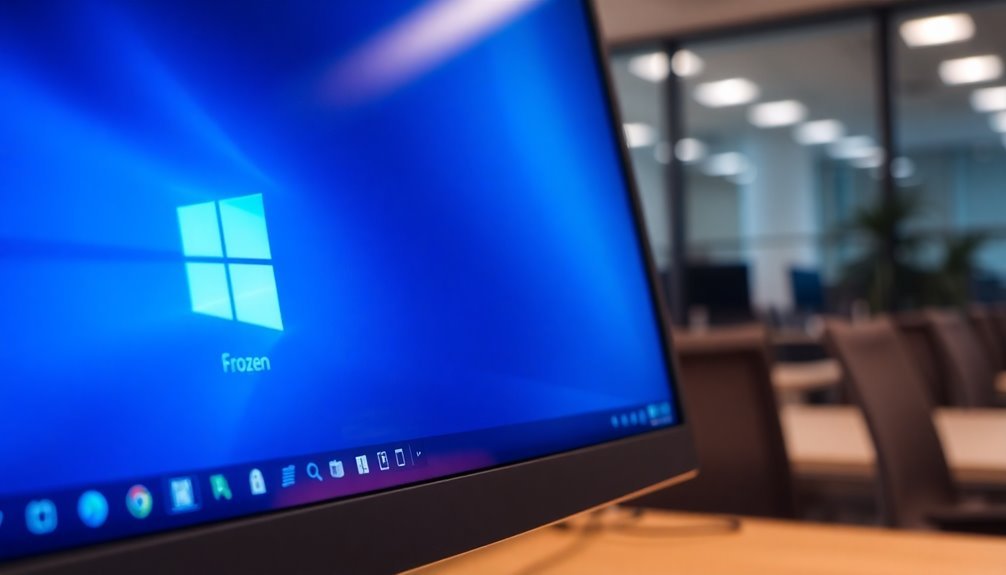
If your Windows PC freezes when idle, start by updating all drivers—especially graphics and chipset—direct from the manufacturer. Check RAM and disk health, and disable any unnecessary background processes or startup apps.
Adjust power and sleep settings by setting the Balanced plan and avoiding aggressive sleep timers. Also, turn off USB selective suspend.
Check Event Viewer for recurring errors and consider BIOS updates. These quick steps usually solve idle hangs, but further troubleshooting tips can tackle more persistent issues.
Common Causes of Windows Freezing When Idle
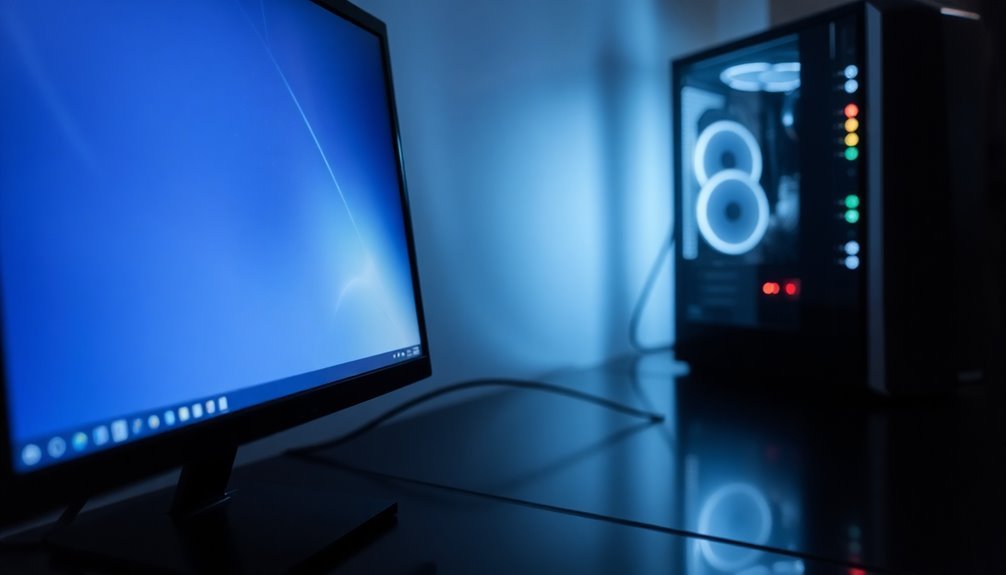
Common Causes of Windows Freezing When Idle: How to Fix Windows Idle Freezing Issues
Windows freezing when idle is a common problem that can disrupt your workflow and cause frustration. Understanding the common causes of Windows freezing during idle periods can help you troubleshoot and resolve these issues effectively.
1. Faulty or Incompatible RAM
One of the leading causes of Windows freezing when idle is faulty or incompatible RAM. If you experience freezing that stops after swapping RAM modules, your RAM could be the culprit.
Using RAM not listed in your motherboard’s compatibility list often leads to stability problems, especially during low activity or idle states.
2. Outdated or Corrupted Drivers
Outdated or corrupted drivers, particularly graphics and chipset drivers, are frequent triggers for Windows freezing when idle. These issues often manifest as event 10016 Distributed COM errors before the system hangs.
To fix this, update all your drivers directly from the official manufacturer websites to ensure compatibility and stability.
3. Hardware Issues Like Failing SSDs, Motherboards, or USB Conflicts
Hardware problems such as failing SSDs, faulty motherboards, or USB device conflicts can cause Windows to freeze when idle, even if the system performs well under heavy load.
Since extended diagnostics may not always detect these faults, try isolating the problem by disconnecting or replacing components one at a time.
Another potential cause is a buildup of unused applications or background programs that may interfere with system performance during idle states.
4. Too Many Background Processes or Insufficient RAM
Running too many background processes or having insufficient RAM can overload your system’s resources, causing freezing during idle periods.
Monitor your system’s resource usage and close unnecessary background tasks to improve performance.
By addressing these common causes, you can prevent Windows freezing when idle and maintain a smooth, stable system.
For best results, regularly update drivers, check hardware compatibility, and monitor system health to avoid idle freezing issues.
Power and Sleep Settings That Affect System Stability
Power and Sleep Settings That Impact Windows Stability: How to Prevent Freezes and Crashes
Power and sleep settings play a crucial role in optimizing energy consumption on your Windows PC, but incorrect configurations can lead to system freezes during idle times. To maintain a stable and responsive computer, start by verifying your active power plan. The Balanced power plan is generally the safest choice because it prevents aggressive CPU throttling and excessive power usage.
High Performance or custom power plans that maximize CPU states may cause overheating and instability if your cooling system isn’t sufficient. Conversely, the Power Saver plan can throttle the CPU too much, resulting in sluggish performance or even system freezes.
It’s important to carefully review your processor state settings. Setting the minimum processor state too low can cause throttling issues, especially when your computer is idle. Using passive cooling methods may also reduce performance and system stability. For optimal results, configure your system for active cooling to avoid overheating and freezes.
Additionally, sleep and hibernate settings can affect Windows stability. Aggressive sleep timers or enabling hybrid sleep may lead to hardware or driver failures. Disabling hybrid sleep or extending sleep timers can improve reliability.
To further enhance system stability during idle periods, disable USB selective suspend if your external devices cause system hangs. Also, consider turning off PCI Express power-saving features, which can prevent instability related to power management.
By fine-tuning these power and sleep settings, you can reduce the chances of Windows freezing and ensure a smoother, more stable computing experience.
Keywords: Windows power settings, prevent Windows freeze, power plan optimization, processor state settings, disable USB selective suspend, PCI Express power saving, sleep and hibernate settings, Windows stability tips
Updating Drivers to Prevent Idle Freezes
How to Update Drivers to Prevent Idle Freezes on Your PC
Fine-tuning your power and sleep settings can improve your PC’s stability, but if you experience persistent freezes during idle periods, outdated or faulty drivers are often the main cause. Common drivers that lead to idle freezes include graphics, chipset, USB, and network drivers—especially when they mishandle power states or suspend-resume cycles.
To fix this issue, regularly update your drivers by checking Device Manager, but for the latest and most reliable versions, always visit the official manufacturer’s website. Before updating any critical drivers, create a system restore point to safeguard your system.
Update one driver at a time and reboot your PC after each update to ensure changes take effect and make troubleshooting easier.
To identify problematic drivers causing idle freezes, use Windows Event Viewer to look for errors or warnings around the time freezes occur. Run memory diagnostics to rule out RAM issues, and perform a clean boot to detect software conflicts. Tools like Driver Verifier can help stress-test drivers for instability.
Tracking freeze behavior before and after driver updates will help confirm if the issue is resolved. Consistent driver updates combined with optimized power settings are essential to prevent idle freezes and keep your PC running smoothly.
Keywords: update drivers, prevent idle freezes, fix PC freezing, driver updates, Windows freezes, driver troubleshooting, power settings optimization
Adjusting BIOS and Hardware Configurations
If your PC keeps freezing when idle despite updating drivers and optimizing power settings, it’s crucial to check your BIOS and hardware configurations for effective troubleshooting.
Start by entering the BIOS setup and updating the BIOS firmware, as manufacturers frequently release updates that fix idle freezing issues. For AMD Ryzen systems, adjust the “Power Supply Idle Control” setting to “Typical Current Idle” and consider disabling “Global C-State Control” to improve system stability, although this may increase power consumption.
On Intel processors, avoid disabling all C-states since some, like C3, are essential for maintaining full Turbo Boost performance.
Next, verify your RAM settings in the BIOS to ensure the timings and speeds align with your memory’s official specifications. If your PC still freezes, disable deep sleep modes and aggressive power-saving features in the BIOS, especially those related to USB or PCI devices.
Another effective step is to reset the CMOS or reflash the BIOS to restore default settings. Finally, perform hardware diagnostics by testing your system with minimal components to identify any compatibility issues or failing hardware.
Managing Memory and Virtual Memory Effectively
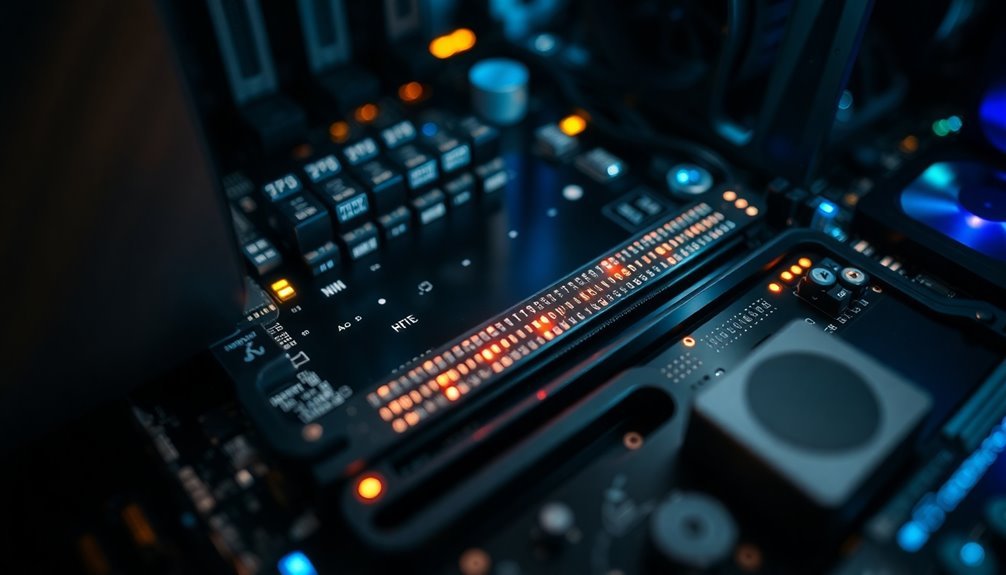
Effective memory management is essential to prevent Windows from freezing when idle. To keep your system running smoothly, closely monitor your RAM and virtual memory usage using Windows Task Manager or Resource Monitor. Frequent low virtual memory warnings, slow application launches, and persistent disk thrashing are clear signs that you need to optimize your virtual memory settings.
For optimal performance, set your virtual memory (paging file) size to 1.5 to 3 times the amount of installed RAM. Make sure to assign the same value for both the initial and maximum paging file size to prevent fragmentation and reduce resizing delays. Before customizing these settings, disable the “Automatically manage paging file size” option in Windows.
Also, ensure you have enough free disk space available for the pagefile to function properly.
To optimize and troubleshoot memory management effectively on Windows:
- Regularly monitor memory usage to identify high-impact processes and potential memory leaks.
- Look out for excessive paging activity and system slowdowns during multitasking.
- Keep detailed records of configuration changes and system performance metrics for easy troubleshooting and rollback.
Always restart your computer after making adjustments to allow changes to take effect. Managing your virtual memory settings correctly can significantly improve Windows stability and prevent freezing issues when your PC is idle.
Handling Background Processes and Startup Programs
How to Fix Windows Freezing During Idle by Managing Background Processes and Startup Programs
If your Windows PC freezes or slows down during idle periods, the most common causes are background processes and startup programs consuming CPU and memory resources. To resolve this issue and improve system performance, follow these essential steps:
1. Identify and Disable Unnecessary Background Apps
Go to Settings > Privacy > Background apps in Windows 10 or Windows 11. Review the list of apps running in the background and disable those you rarely use.
Consider uninstalling built-in apps like Maps if they aren’t needed. Reducing telemetry and diagnostic services can also help minimize background data usage and improve system responsiveness.
2. Manage Startup Programs to Speed Up Boot Time
Open the Task Manager and navigate to the Startup tab, or use the msconfig tool to view startup programs. Disable any non-essential applications that automatically launch during startup.
Be sure to keep important programs such as your antivirus software enabled to maintain system security.
3. Perform a Clean Boot for Advanced Troubleshooting
If freezing persists, perform a clean boot to isolate problematic software or services. This process temporarily disables all non-Microsoft startup items and services, helping you identify the root cause of the issue.
4. Control Background Services Using the Services Console
Launch the Services console by typing `services.msc` in the Run dialog. Set unnecessary services like Background Intelligent Transfer Service (BITS) or telemetry-related services to Manual or Disabled.
Always research a service’s purpose before disabling it to prevent system instability.
5. Monitor Resource Usage Regularly
Use Task Manager or Resource Monitor to keep an eye on resource-heavy processes. Early detection of high CPU or memory usage can prevent freezing and maintain smooth Windows performance.
By following these tips to manage background processes and startup programs, you can effectively fix Windows freezing during idle, optimize your PC’s speed, and enhance overall user experience.
For more Windows optimization tips, stay tuned to our blog.
Analyzing Event Logs and System Diagnostics
Windows Freeze During Idle: How to Analyze Event Logs and Run System Diagnostics
If your Windows PC freezes during idle, background processes are often the culprit. To effectively troubleshoot and fix Windows freezing issues, analyzing event logs and running system diagnostics is crucial. Here’s a step-by-step guide to pinpoint the root cause and resolve freezes:
1. Check Event Viewer Logs for Windows Freeze Errors
Open Event Viewer to review system and application logs around the freeze timestamp. Look for specific Event IDs, error messages, or warnings that indicate system problems. Use these Event IDs to search online for known fixes and solutions tailored to your Windows version.
2. Configure Log Retention Settings
Windows may clear event logs on reboot, making it harder to track issues. To retain logs longer, redirect event logs via the Registry under `HKEY_LOCAL_MACHINESYSTEMCurrentControlSetServiceseventlog`. This ensures critical diagnostics data is preserved for analysis.
3. Enable CrashOnCtrlScroll for Manual Memory Dumps
For advanced troubleshooting, enable CrashOnCtrlScroll to trigger a manual memory dump during a freeze. This dump file can be analyzed with debugging tools like WinDbg to identify memory leaks, driver faults, or kernel-level problems causing Windows to freeze.
4. Use Built-in Diagnostics Tools: Reliability Monitor and PoolMon
Utilize Windows built-in utilities such as Reliability Monitor to check for system stability issues and PoolMon to monitor kernel memory usage. These tools help isolate problematic drivers or hardware components affecting system performance.
Summary:
- Review Event Viewer logs for errors and Event IDs during freezes
- Configure Registry to retain event logs across reboots
- Generate memory dumps with CrashOnCtrlScroll for in-depth analysis
- Use Reliability Monitor and PoolMon for targeted hardware and driver diagnostics
Disk Health, Storage Space, and Freezing Issues
If your Windows PC freezes during idle, checking disk health and available storage space is essential for troubleshooting. Damaged or corrupted hard drives, including both SSDs and HDDs, often cause system freezes, crashes, and data loss when the system attempts to read or write data.
Key warning signs include unexpected freezes, error messages, and unusual noises from the drive. Additionally, low storage space on your system drive can cause disk usage to reach 100%, overwhelming input/output operations and resulting in frequent system freezes. Common causes include resource-heavy background processes, malware infections, and unnecessary startup programs or services.
Corrupted system files can worsen freezing issues, especially during idle times when Windows runs background maintenance tasks. Using built-in Windows tools like CHKDSK, SFC (System File Checker), and DISM (Deployment Image Servicing and Management) can help detect and repair disk errors and corrupted system files. However, it’s important to run these tools carefully to prevent further damage.
To minimize disk-related freezing problems, always maintain at least 10-15% free disk space and regularly clean up temporary files. Keeping your hard drive healthy and storage optimized is crucial for a smooth, freeze-free Windows experience.
Step-by-Step Solutions to Fix Idle Hangs
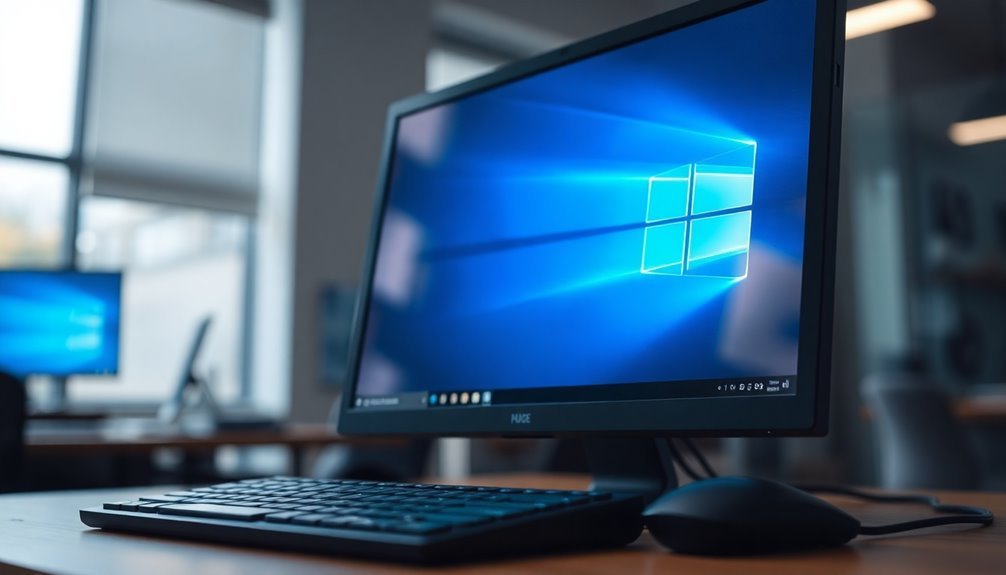
How to Fix Idle Hangs on Windows: Step-by-Step Guide
Experiencing system freezes or idle hangs on your Windows PC can be frustrating. These issues often occur due to misconfigured power settings, outdated drivers, or problematic background processes. To fix idle hangs effectively, follow our comprehensive step-by-step solution.
1. Optimize Windows Power Settings
Start by adjusting your power options in Windows. Navigate to the Control Panel and modify sleep and hard disk timeout settings. Increasing inactivity periods before sleep mode activates can prevent unwanted freezes during idle.
2. Update Device Drivers
Ensure all your chipset, CPU, and device drivers are up to date. Updated drivers improve compatibility with power management protocols and can eliminate idle hang problems caused by outdated software.
3. Adjust BIOS/UEFI Power Features
Access your BIOS or UEFI settings and disable features such as Global C-State Control or set Power Supply Idle Control to ‘Typical’. These adjustments fix CPU state-related issues that often lead to system freezes during idle periods.
4. Manage Background Processes and Startup Programs
Too many startup applications or scheduled tasks can overwhelm system resources when your PC is idle. Use Task Manager to disable unnecessary startup programs and monitor background processes for any errant behavior.
Summary:
- Fine-tune advanced Windows and BIOS power settings
- Regularly update or roll back drivers when needed
- Audit and control background programs and scheduled tasks
By following this methodical troubleshooting guide, you can effectively isolate and resolve most Windows idle hang scenarios, ensuring smoother system performance.
For more expert tips on resolving Windows freezes and improving PC stability, keep exploring our detailed guides.
Frequently Asked Questions
Can Antivirus Software Cause Windows to Freeze When Idle?
Yes, antivirus software can cause Windows to freeze when idle if you run multiple programs simultaneously, experience conflicts with Windows Defender, or have resource-heavy scans scheduled. Disable extra antivirus, update software, and monitor resource usage to troubleshoot effectively.
Does a Dual-Boot Setup Increase the Risk of Idle Freezing?
Yes, a dual-boot setup can increase your risk of idle freezing due to potential driver conflicts, inconsistent hardware states, or power management differences between operating systems. You should update drivers, firmware, and adjust boot settings to minimize issues.
Will Replacing My HDD With an SSD Stop Idle Hangs?
Yes, replacing your HDD with an SSD will likely stop idle hangs. You’ll benefit from faster data access, reduced latency, and improved responsiveness, minimizing freezes caused by slow disk I/O or mechanical delays during inactivity or background tasks.
Can Windows Freeze When Idle Due to Overheating?
Of course, your system can absolutely freeze from overheating while just sitting idle—because who needs intense gaming for thermal drama? Check for dust, failing fans, or thermal paste issues, and monitor temperatures to troubleshoot these sneaky heat-induced freezes.
Is There a Way to Automatically Restart Windows After an Idle Freeze?
You can’t set Windows to auto-restart strictly after an idle freeze by default. However, you can create custom scripts with Task Scheduler or PowerShell to monitor responsiveness and trigger a reboot, though you’ll need careful setup and testing.
Conclusion
Don’t let your Windows PC freeze when idle—diagnose, adjust, and optimize. Check your power settings, update your drivers, and tweak your BIOS for stability. Free up memory, manage startup programs, and monitor background tasks. Analyze event logs, inspect your disk health, and guarantee you’ve got enough storage. By taking these parallel steps, you’ll transform system hangs into smooth performance and keep your computer running reliably, even when you’re away from your desk.
